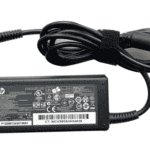The landscape of network scanning and mapping tools has advanced significantly, with modern platforms integrating AI, automation, and cloud-native architecture to deliver deeper insights and broader visibility across complex IT environments. These tools are essential for detecting vulnerabilities, managing devices, and maintaining efficient network performance.
Best Network Scanning and Mapping Tools in 2025
1. Nmap

A powerful open-source utility, Nmap remains a go-to for network discovery and security auditing. It supports port scanning, service version detection, OS fingerprinting, and scriptable interaction with the target, making it ideal for both administrators and penetration testers.
2. ZMap

This high-speed scanner is designed for researchers and enterprises needing to scan massive IP ranges quickly. It can survey the entire IPv4 address space in under an hour, making it excellent for large-scale network studies or security sweeps.
3. SolarWinds Network Performance Monitor

This comprehensive tool offers automatic device discovery, real-time network mapping, and performance analytics. It supports hybrid environments and provides visual topologies, alerting, and traffic insights to help diagnose and resolve network issues quickly.
4. Paessler PRTG Network Monitor
PRTG uses customizable sensors to monitor various network parameters, including bandwidth usage, device status, and uptime. It supports protocols like SNMP, NetFlow, WMI, and packet sniffing, offering a holistic view of network health.
5. Auvik
A cloud-based solution tailored for managed service providers and IT teams, Auvik delivers automated network discovery, topology mapping, configuration backups, and real-time alerts. It’s known for its intuitive interface and rapid deployment.
6. Advanced IP Scanner
This lightweight tool for Windows allows quick scanning of LANs, displaying device names, IP and MAC addresses, and offering remote control capabilities like Wake-on-LAN and shutdown. It’s a fast, free option for smaller networks.
7. ManageEngine OpManager
OpManager offers real-time performance monitoring, device discovery, network visualization, and customizable alerts. It’s suitable for both SMBs and large enterprises looking to manage routers, switches, servers, and virtual machines from a centralized dashboard.
Trends in Network Scanning and Mapping
- AI-Powered Insights: Modern tools now include AI to detect anomalies, predict potential network failures, and streamline routine diagnostics, enabling proactive maintenance.
- Security Integration: More platforms now combine network mapping with vulnerability scanning and compliance checks, bridging the gap between IT operations and security.
- Cloud-Native Architecture: With increasing cloud adoption, many solutions now support cloud-first deployments, offering scalability and compatibility with hybrid or multi-cloud setups.
- IoT and Remote Monitoring: As IoT device usage grows, scanning tools have evolved to include better visibility and monitoring for these often less secure endpoints.
Selecting the right network scanning tool depends on the size, complexity, and security needs of your organization. From free utilities for small teams to enterprise-grade platforms offering automation and AI, the tools listed above represent the leading options in 2025 for robust and comprehensive network management.
A Look At The Top Network Scanners
Network scanners help you see what’s connected to your computer networks. They find devices like printers, phones, and computers that share your network. A good network scanner can reveal unauthorized users on your Wi-Fi and provide important details about each device on your network.
Finding the right network scanner matters if you want to keep your network safe and running well. Some popular options include Angry IP Scanner which works on Windows, Mac and Linux, and Advanced IP Scanner which gives access to shared folders. Mobile users often prefer apps like those mentioned in Reddit discussions about network scanning tools.
1. Angry IP Scanner
Angry IP Scanner is a fast and simple network scanner that works across Windows, Mac, and Linux systems. This open-source tool quickly scans IP addresses and ports to help you find active devices on your network.
Many users prefer it because of its user-friendly interface. You can easily see which devices are connected to your network without needing deep technical knowledge.
The scanner is lightweight and doesn’t require installation in most cases. You can download the latest version (3.9.1) from the official website and start scanning right away.
What makes Angry IP Scanner stand out is its speed. It can check thousands of IP addresses in minutes, saving you valuable time during network audits.
Some security software might flag Angry IP Scanner as potentially unwanted. This happens because network scanning tools can be used for both good and bad purposes. According to Reddit discussions, some antivirus programs get triggered by it.
The tool offers several useful features beyond basic scanning. It can detect hostname, MAC address, and even open ports on discovered devices. This makes it a versatile alternative to more complex tools like Nmap.
IT professionals often use it for quick network checks. According to Spiceworks community, many tech experts keep it in their toolkit alongside other specialized scanners.
The interface is straightforward – enter an IP range, hit scan, and wait for results. This simplicity makes it perfect for basic network mapping and troubleshooting tasks.
2. Advanced IP Scanner
Advanced IP Scanner is a free network scanning tool that helps users identify all devices connected to their network. The software is quick to set up and doesn’t require installation to function.
This scanner displays all network devices in an easy-to-read format. Users can see computers, network printers, and other equipment on their network at a glance.
One of the standout features is how it gives users access to shared folders directly from the interface. This saves time when trying to connect to network resources.
The tool also includes remote control capabilities. Users can shut down computers remotely when needed, which is helpful for network administrators managing multiple systems.
Many in the tech community recommend Advanced IP Scanner for its simplicity. On forums like Reddit, users often mention it as their go-to choice for quick network checks.
The scanner works by sweeping through IP ranges you specify. It then reports back with hostname information, MAC addresses, and even the manufacturer of network adapters when possible.
For basic home networks or small business setups, this tool provides just enough information without overwhelming the user with complex metrics. It strikes a good balance between functionality and ease of use.
The latest version supports both IPv4 and IPv6 addresses, making it suitable for modern network environments. It also integrates with remote access tools like Radmin, allowing for convenient troubleshooting.
The program’s interface is straightforward, with clear buttons and options that don’t require advanced networking knowledge to understand.
3. Nmap
Nmap, short for “Network Mapper,” is a free and open source utility that has become essential for network discovery and security auditing. It works by sending specially crafted packets to target systems and analyzing their responses.
Security professionals use Nmap to scan networks for open ports, detect running services, and identify potential vulnerabilities. The tool can map entire networks quickly, making it valuable for both defensive security work and penetration testing.
One of Nmap’s strengths is its scanning versatility. It offers multiple scan types to suit different needs. The SYN scan (-sS) is faster and less noticeable on networks, while the TCP connect scan (-sT) provides more complete connection information but leaves more traces.
Nmap can also detect malware and backdoors by testing services like Proftpd, Vsftpd, IRC, and SMB. This feature helps administrators spot compromised systems on their networks.
The tool runs on all major operating systems including Windows, Linux, and macOS. Its command-line interface gives experienced users precise control, while beginners can use the graphical Zenmap interface for easier operation.
Many network administrators find Nmap helpful for network inventory tasks. It can identify operating systems, track which ports are open, and map how devices connect to each other.
The community has built useful additions to Nmap. For example, nmapAutomator helps automate enumeration and reconnaissance tasks, saving time during security assessments.
Nmap’s power comes with responsibility. Users should only scan networks they own or have permission to test. Unauthorized scanning can trigger security alarms and might violate laws in some jurisdictions.
With regular updates and a strong community, Nmap continues to be the go-to network scanning tool for security professionals worldwide.
4. SolarWinds IP Address Manager
SolarWinds IP Address Manager is a powerful tool that helps network administrators find, track, and manage IP addresses across their networks. It stands out for its ability to automatically scan networks and keep track of IP address changes.
The software gives you a clear view of your entire IP infrastructure. This makes it easier to see what’s happening on your network at any time.
One of the key benefits is its automatic scanning feature. The tool can conduct periodic IP scans to keep your information up to date without manual work.
Network administrators can quickly identify which IP addresses are in use and which are available. This helps prevent IP conflicts that can cause network problems.
The interface is user-friendly and doesn’t require extensive technical knowledge. Even those new to network management can navigate the system effectively.
For busy IT teams, the network scanning capabilities save significant time. The automated discovery features find devices on the network without manual searching.
When network issues arise, SolarWinds IP Address Manager helps identify problems faster. Administrators can see which devices are connected and track changes over time.
The software offers comprehensive visibility into your network. This allows for more efficient IP allocation and quick resolution of any conflicts that might occur.
For organizations with growing networks, this tool scales well. It can handle small networks or enterprise-level infrastructures with equal effectiveness.
A free trial is available for those who want to test the features before purchasing. This allows network administrators to see how the tool works in their specific environment.
5. MyLanViewer
MyLanViewer is a powerful IP address scanner designed specifically for local area networks. It helps users find all IP addresses, MAC addresses, and shared folders on both wired and wireless networks.
The tool uses a buddy-list style interface that shows computers on your network. This makes it easy to see what devices are connected at a glance. Many network admins like this approach because it feels more intuitive than text-based lists.
One standout feature is how MyLanViewer checks only computers with open NBT ports. This allows for quick scanning of large IP ranges without wasting time on unresponsive addresses. Speed matters when you need to check network status quickly.
Beyond basic scanning, MyLanViewer functions as a traceroute tool and network monitor. These added capabilities make it more versatile than some competing scanners that only perform basic discovery functions.
The program works well for both home users and IT professionals. It can detect all shared resources on your network, which helps when troubleshooting connection issues or looking for specific shared folders.
Installation is straightforward, and the interface doesn’t require much technical knowledge to navigate. Even newer network administrators can get useful results quickly with minimal setup time.
For those concerned about security, MyLanViewer helps identify unauthorized devices on your network. This makes it a good option for basic network security monitoring in small business environments.
6. OpenVAS
OpenVAS stands for Open Vulnerability Assessment Scanner, a full-featured vulnerability scanner that helps identify security issues in networks. It has been developed by Greenbone since 2006 and remains one of the most popular open-source security tools available.
The scanner supports both authenticated and unauthenticated testing across various protocols. This flexibility makes it useful for organizations of all sizes looking to improve their security posture without significant investment.
OpenVAS shines in its daily updated feeds that keep the vulnerability database current. This regular updating is crucial as new security threats emerge constantly in the cybersecurity landscape.
Many users appreciate OpenVAS for its user-friendly interface, making complex security scanning more accessible. Even those with limited technical expertise can run basic scans after some initial setup.
The open-source nature of OpenVAS creates a key advantage over commercial alternatives like Nessus. While Nessus may offer more comprehensive features, OpenVAS provides a free solution that works well for many organizations with budget constraints.
Some users report using OpenVAS through AlienVault, which helps manage updates and maintenance. This integration option makes the tool even more accessible for teams without dedicated security resources.
Beyond vulnerability detection, users often ask what else OpenVAS can scan for. The tool primarily focuses on identifying security weaknesses, but its comprehensive approach helps detect numerous types of network issues.
For organizations seeking a reliable network scanner without expensive licensing, OpenVAS presents a compelling option. Its active community support and ongoing development ensure it remains relevant in the ever-changing security landscape.
7. NetSpot
NetSpot is a powerful WiFi site survey software that helps users plan wireless networks and create WiFi heat maps. It stands out in the network scanner market for its versatility across multiple platforms.
The software works on Mac OS, Windows, and Android devices, making it accessible for most users regardless of their preferred operating system. NetSpot even offers free versions to get started with basic scanning capabilities.
What makes NetSpot particularly useful is its visual approach to network analysis. The app creates WiFi heat maps that show signal strength throughout your space, helping identify dead zones and interference issues.
For those struggling with poor WiFi performance, NetSpot includes a WiFi channel scanner that helps users find the least congested channels. This feature alone can significantly improve network performance in crowded environments like apartment buildings or office spaces.
The interface is designed to be user-friendly while still offering professional-grade features. This balance makes it appropriate for both home users and IT professionals who need more advanced capabilities.
On mobile devices, NetSpot continues to impress as a heat mapping tool for Android phones and tablets. The app maintains most of the desktop functionality in a mobile-friendly format.
Beyond just scanning networks, NetSpot functions as a complete WiFi analyzer that helps diagnose and resolve various wireless issues. Users can track signal strength over time, identify interference sources, and plan better access point placement.
While the free version works well for basic home use, premium options unlock additional features for larger networks and professional environments. The software scales nicely from simple home setups to enterprise-level deployments.
8. inSSIDer
InSSIDer is a powerful Wi-Fi scanning tool that helps users identify and solve wireless network problems. This popular network scanner analyzes your Wi-Fi configuration including channel settings, signal strength, security, and the impact of neighboring networks.
The basic version of inSSIDer is free and offers robust scanning capabilities. For users who need more features, MetaGeek Plus supercharges inSSIDer by enabling snapshots and unlocking client traffic monitoring.
What makes inSSIDer stand out is its user-friendly interface that clearly displays information about your wireless environment. It helps identify channel overlap issues that might be causing slow connections or dropped signals.
The tool works with virtually any wireless adapter, making it accessible for most users. This flexibility means you don’t need special hardware to start diagnosing your network problems.
Network administrators and home users alike appreciate inSSIDer’s ability to provide actionable insights. After scanning your area, it can make settings recommendations to improve your connection quality.
InSSIDer ranks among the best Wi-Fi analyzer software options available today. Its combination of accessibility and powerful features makes it suitable for both beginners and networking professionals.
The visual representation of signal strength over time helps users spot interference patterns that might not be obvious from a single scan. This feature is particularly useful when troubleshooting intermittent connection issues.
For those looking to optimize their home or office Wi-Fi setup, inSSIDer provides the data needed to make informed decisions about router placement and channel selection.
9. Fing
Fing stands out as a complete network monitoring solution for homes and small offices. This popular tool helps users catalog and secure their devices with just one click.
The app has earned its reputation as the #1 Network Scanner in the market. Its patented technology identifies all devices connected to your WiFi network, providing clear visibility of your digital environment.
Many users turn to Fing when they need to know who’s connected to their WiFi or if someone might be stealing their bandwidth. The app also helps detect potential security breaches by identifying unauthorized devices.
The free version offers substantial functionality, though Fing also provides premium options with advanced features. Users can download it on both Android and iOS platforms, making it accessible regardless of device preference.
Some tech professionals have noted that while Fing used to be exceptional several years ago, its free features have become more limited over time. However, it remains useful for basic network scanning needs.
Fing appears consistently in lists of the best network scanner apps, often taking the top spot ahead of other options like Angry IP Scanner, Nmap, Advanced IP Scanner, and Wireshark.
The interface is user-friendly, making complex network information accessible even to those without technical expertise. This accessibility factor helps explain its widespread popularity among average users and IT professionals alike.
For quick, reliable network scanning with device identification capabilities, Fing delivers a solid experience that meets most home and small business needs.
10. WiFi Analyzer
WiFi Analyzer tools help you understand and optimize your wireless networks. These apps show signal strength, identify channel congestion, and suggest ways to improve your connection quality.
SolarWinds Network Performance Monitor offers comprehensive WiFi analysis capabilities with a user-friendly interface. It’s a popular choice among IT professionals who need detailed network insights.
For Android users, the WiFi Analyzer app provides useful optimization information to reduce interference and boost connection speed. The app displays network data in easy-to-understand graphs.
NetSpot is another excellent option that creates visual heatmaps of your network. These maps help you spot weak coverage areas and interference zones throughout your space.
For iPhone users, finding good WiFi analyzer apps can be challenging due to Apple’s restrictions. Some community members have discussed various options for assessing signal strength and identifying crowded channels on iOS devices.
Free options exist for those on a budget. WiFi Analyzer for Android and NetSpot for PC are recommended by many network enthusiasts as effective no-cost solutions.
Most WiFi analyzers share common features like channel scanning, signal strength measurement, and network discovery. The right tool depends on your specific needs and technical expertise.
When using these tools, you’ll gain insights about neighboring networks that might cause interference. This information helps you select the best channel for your router and optimize placement for maximum coverage.
Understanding Network Scanners
Network scanners are essential tools for identifying and analyzing devices on a network. They help administrators and security professionals map network infrastructure and identify potential vulnerabilities.
Purpose and Functionality
Network scanning is the process of examining a network to discover active hosts, IP addresses, and open ports. These tools send packets to target devices and analyze the responses to gather information. The primary functions include:
- Device discovery – Finding all active devices on a network
- Service enumeration – Identifying running services and open ports
- Vulnerability assessment – Detecting potential security weaknesses
- Network mapping – Creating visual representations of network topology
Network scanners help IT teams maintain network security by providing visibility into connected devices. They’re crucial for both routine maintenance and security postures.
Many scanners use ping requests to determine if devices are active. Advanced scanners can identify operating systems and device types through techniques like TCP/IP fingerprinting.
Types of Network Scanners
Network scanners come in various forms, each designed for specific purposes:
Port scanners check which ports are open on network devices. Nmap is widely considered the most comprehensive free option in this category.
IP scanners like Advanced IP Scanner quickly identify all devices on a network by their IP addresses.
Vulnerability scanners specifically look for security weaknesses and potential exploit opportunities.
Passive scanners monitor network traffic without sending packets, making them undetectable but less comprehensive.
Network scanners can also be categorized as agent-based (requiring software installation on target devices) or agentless (working remotely). Agentless scanners are more popular for their ease of deployment across large networks.
Key Features of Network Scanners
When choosing a network scanner, several key features can make a big difference in how useful the tool is for your organization.
Vulnerability Assessment is a core function that helps identify weak points in your network before attackers can exploit them. Good scanners will check against databases of known vulnerabilities and provide actionable reports.
Port Scanning capabilities allow you to see which ports are open on network devices. This helps identify potential security gaps and unnecessary services running on your systems.
Automated scanning mechanisms save time by regularly checking your network without manual intervention. The best tools can be scheduled to run during off-hours to minimize disruption.
Report Generation features transform complex scan data into readable formats. Look for tools that provide clear graphs and analysis to help make sense of your network status.
Compliance Monitoring helps ensure your network meets industry standards and regulations. Many top network scanners include compliance checking for standards like HIPAA, PCI DSS, and GDPR.
Cloud Integration is increasingly important as networks expand beyond physical locations. Modern scanners should be able to assess cloud-based resources alongside on-premises equipment.
Multiple Device Management allows IT teams to monitor various network equipment from a single dashboard. This creates a more complete picture of your network security posture.
Shared Access Support enables team collaboration, letting multiple IT staff view and respond to scan results without duplicating efforts.
Best Practices for Using Network Scanners
Using network scanners effectively requires a balanced approach to maintain security while ensuring optimal performance. The following practices will help you get the most from your scanning tools without compromising your network integrity.
Ensuring Network Security
Network scanning should be done frequently and regularly to catch vulnerabilities before attackers can exploit them. Set up a consistent schedule—weekly for critical systems and monthly for less essential ones.
Always get proper authorization before scanning any network. Unauthorized scanning might violate company policies or even laws in some cases.
Use authenticated scans when possible. These provide more accurate and detailed results than unauthenticated scans by accessing systems with valid credentials.
Keep your scanning tools updated. Outdated scanners might miss new vulnerabilities or produce false results.
Consider these security measures:
- Encrypt scan data both in transit and storage
- Limit access to scanning results to authorized personnel only
- Document all scanning activities for audit purposes
- Use various scanning methods to cover your diverse network landscape
Optimizing Performance
Start with small targeted test scans before scanning your entire network. This helps identify potential issues before they affect your whole system.
Schedule scans during off-peak hours when possible. Network scanning can consume bandwidth and might slow down critical business operations if run during busy periods.
Break large networks into smaller segments for scanning. This makes the process more manageable and reduces the impact on network performance.
Consider using these techniques to improve efficiency:
- Deploy agents on devices for continuous monitoring
- Set appropriate scan depths based on system criticality
- Filter out known false positives to focus on real issues
- Establish baseline readings for comparison with future scans
Adjust scan intensity based on your needs. Lower-intensity scans are faster but might miss some vulnerabilities, while deeper scans are more thorough but take longer.
Frequently Asked Questions
Network scanner tools help users identify devices, assess security, and manage their networks effectively. Each tool offers specific features that cater to different needs and situations.
Which network scanner tool is recommended for comprehensive vulnerability assessment?
Nmap stands out as the premier choice for comprehensive vulnerability assessment. It offers deep scanning capabilities that identify potential security holes in your network.
The command-line interface gives advanced users complete control over scanning parameters. You can customize scans to target specific vulnerabilities or conduct thorough system-wide assessments.
Nmap also works on multiple operating systems, making it versatile for different environments. Its robust scripting engine allows for automated custom security checks.
What are the top free network scanners available for Windows systems?
Angry IP Scanner ranks among the best free options for Windows users. It quickly identifies active devices on your network and requires minimal setup.
Advanced IP Scanner offers a user-friendly interface with additional features like remote access to shared folders and RDP connections.
MyLanViewer provides a straightforward approach to network monitoring with its intuitive design. It helps track network changes and detect unauthorized devices quickly.
How does Advanced IP Scanner compare to other network scanning tools in terms of speed and efficiency?
Advanced IP Scanner performs scans faster than many alternatives, especially in home and small business environments. Its lightweight design uses minimal system resources while delivering quick results.
Unlike some competitors, it provides instant access to discovered devices through various protocols. This saves time when managing multiple network resources.
However, Advanced IP Scanner will only find active devices during scans. It doesn’t track historical data about offline devices as effectively as some premium options like SolarWinds.
What network scanning applications are preferred by Android users for reliability and features?
Network Scanner by First Row is highly rated among Android users for its consistent performance. It offers a clean interface with essential features for mobile network management.
Fing Network Scanner provides advanced capabilities like device recognition and network quality tests. Users appreciate its accuracy in identifying all connected devices.
These mobile scanners work well for quick network checks when you’re away from your computer. They can help troubleshoot connectivity issues or verify network security from anywhere.
What criteria should be considered when selecting a network scanner for enterprise use?
Scalability stands as the primary consideration for enterprise environments. SolarWinds IP Address Manager excels here by handling thousands of devices without performance loss.
Security features should include vulnerability detection and compliance reporting. Enterprise tools need robust authentication and role-based access controls.
Integration capabilities with existing systems matter greatly. The best enterprise scanners connect with ticketing systems, configuration management databases, and security tools for streamlined workflows.
Can you recommend a network scanner tool that integrates well with security analysis workflows?
Nmap integrates seamlessly with security analysis processes through its extensive output options. Security teams can export results to various formats for further analysis.
It works with popular security platforms like Metasploit and OpenVAS. This compatibility creates efficient workflows for identifying and addressing vulnerabilities.
The tool’s scriptable nature allows for automated scanning as part of regular security maintenance. Teams can schedule recurring scans and compare results to identify new security issues quickly.







